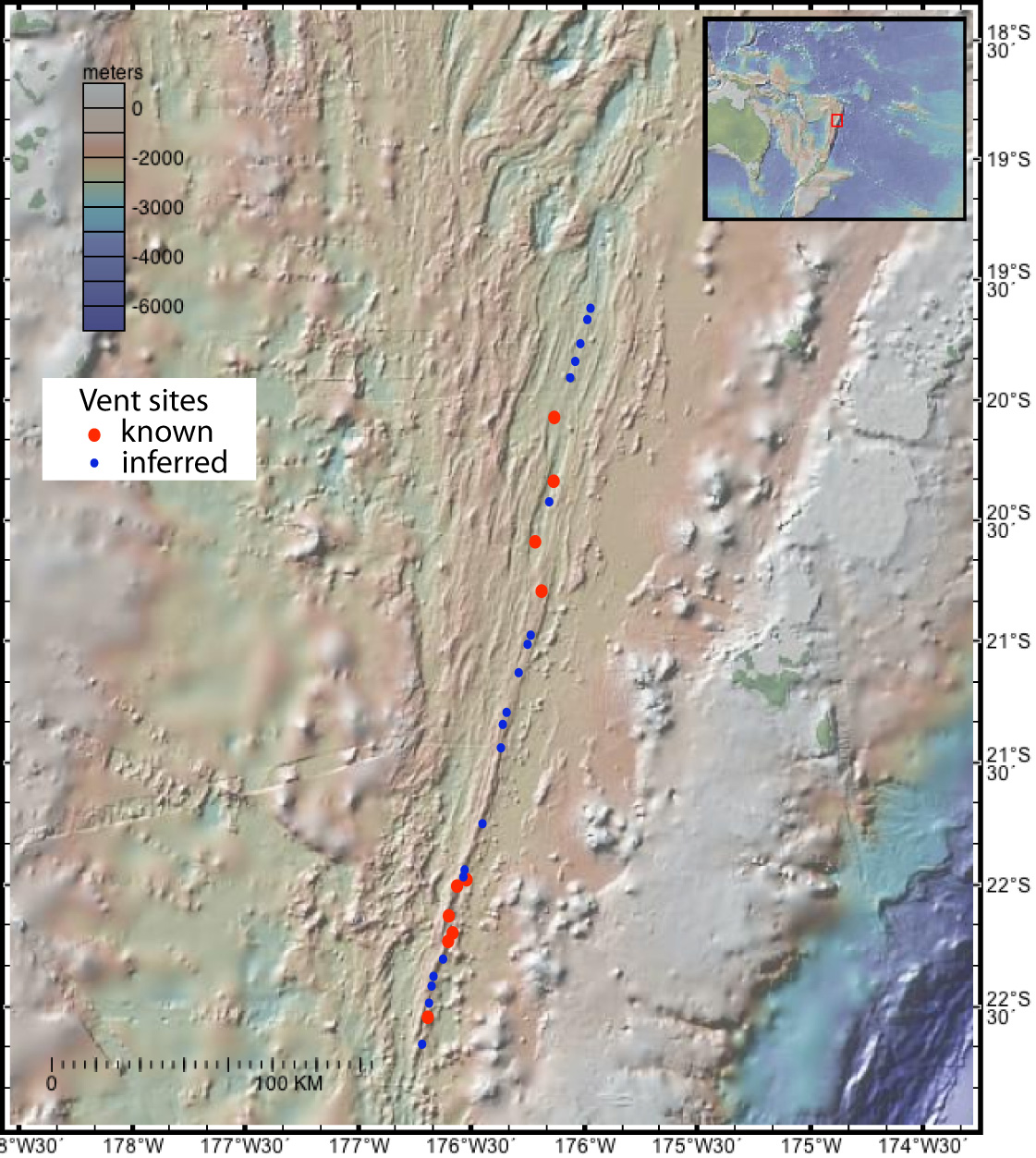Baker
Vent field distribution in the Lau ISS
E.T. Baker¹*, J.A. Resing², & F. Martinez³
Corresponding author: Edward.baker@noaa.gov
¹NOAA/PMEL, Seattle WA 98115
²JISAO Univ. of Washington and NOAA/PMEL, Seattle WA 98115
³SOEST, Univ. of Hawaii, Honolulu HI 96822
Abstract:
The 2D distribution of seafloor vent fields is now better known for the Lau ISS than for any other comparable extent of ridge crest. Water column, AUV, and ROV surveys have pinpointed numerous axial sites, and a recent 2D survey systematically explored for fields within 5 km of the axis along 175 km of ridge. The goal of the explorations was not only to identify vent fields for detailed ISS investigations, but also to investigate the relationships between crustal heat sources and seafloor discharge sites. Two observations are of particular interest. First, while numerous active vents occur along segments of the Va Fa Ridge and Eastern Lau Spreading Center where an AMC is virtually continuous, several sites are also found on the northern ELSC, where an AMC is absent (though isolated sills may exist). High-temperature vents with no accompanying AMC are virtually unknown on other intermediate and fast ridges. Second, we found no evidence for active vents beyond ~1 km from the ridge axis. These results stand in contrast to the idea of enhanced cooling along the off-axis boundaries of axial Low Velocity Volumes. If such cooling is occurring, then the hydrothermal fluids are either highly diluted and dispersed before off-axis discharge, or are channeled to the near-axis zone before exiting the crust. Alternatively, subduction controls on magmatic productivity in this ISS may play an important role in modifying the usual relationships observed at MORs between spreading rate, seismic LLV width, development of faulting, and hydrothermal activity.
Keywords:
Hydrothermal venting, hydrothermal cooling, axial magma chamber, Eastern Lau spreading center
Contributions to Integration and Synthesis:
Knowledge of the distribution of vent fields in the ISS can constrain the conclusions of other research. For example:
Geology/geophysics: The vent field distribution puts specific constraints on the distribution and nature of crustal heat sources. What is the heat source for high temperature fields where an AMC is virtually absent? Is there a correlation between vigorous vent fields and AMC locations with high concentrations of melt? How does the apparent absence of high-temperature vents beyond the neovolcanic zone affect the interpretation of boundary cooling along a LVV? How do variations in apparent permeability (i.e., faults and fissures) along the ELSC correlate with vent field occurrence?
Biology: The number and distribution of chemosynthetic environments influence recruitment patterns and species diversity. Interpretation of results from specific sites must consider the distribution of all possible favorable environments. Seafloor studies have been conducted at ABE, but a much larger and more robust plume signal is seen just a few km farther north on the next segment. Many yet unvisited sites are also present on the Valu Fa Ridge.

